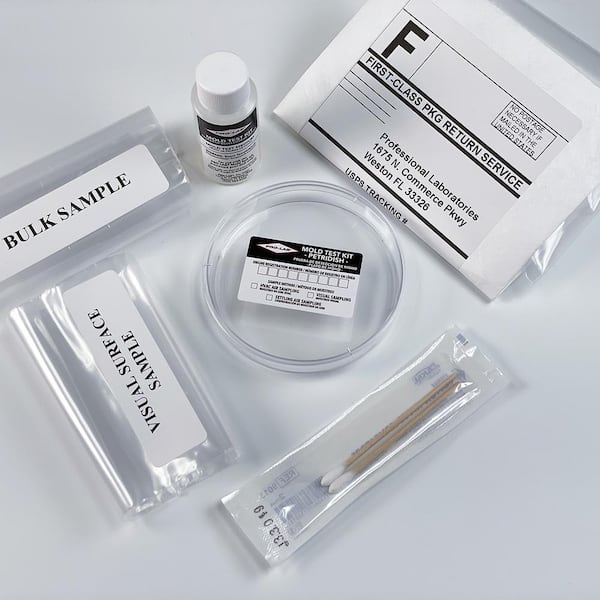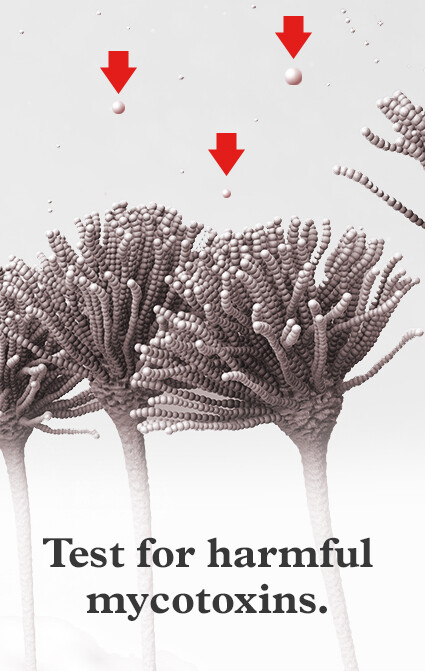How Mycotoxin testing Services Can Secure Your Products
How Mycotoxin testing Services Can Secure Your Products
Blog Article
How Mycotoxin Screening Assists Prevent Contamination and Guard Food Products

Mycotoxin testing is an indispensable practice in the food sector, acting as a frontline defense against contamination by unsafe toxic substances produced by molds. Via the application of innovative strategies like High-Performance Fluid Chromatography (HPLC) and Liquid Chromatography-Mass Spectrometry (LC-MS), food producers can accurately measure and detect mycotoxin levels in farming items. This aggressive method not just makes certain compliance with rigid safety regulations but additionally reduces health risks to customers. Routine testing fortifies brand track record and financial wellness by reducing contamination-related incidents. So, just how exactly do these screening procedures incorporate right into the more comprehensive food safety and security technique?
Recognizing Mycotoxins
Comprehending mycotoxins starts with identifying that they are hazardous secondary metabolites produced by particular mold and mildews, which can pollute farming items. These metabolites are not important for the development or recreation of the fungis yet can have severe ramifications for human and animal wellness. Mycotoxins are frequently located in staple crops such as corn, wheat, barley, and nuts, where they can proliferate under certain problems of dampness and temperature.
There are a number of types of mycotoxins, each created by various fungal types. Fusarium varieties generate fumonisins and trichothecenes, both of which are associated with numerous severe and persistent wellness concerns.

Threats of Mycotoxin Contamination
The threats of mycotoxin contamination are diverse, posturing substantial hazards to both food safety and security and public health and wellness. Mycotoxins, poisonous compounds produced by certain kinds of fungis, can contaminate a vast array of agricultural items including grains, nuts, seasonings, dried out fruits, and coffee. Once these toxins penetrate the food supply, they can cause severe health problems such as liver damage, kidney failure, and even cancer. Prone populaces, consisting of kids, the senior, and immunocompromised people, are especially in jeopardy.
Economic effects are an additional major issue. Contaminated plants can cause substantial monetary losses for farmers and food producers as a result of decreased returns and the demand for expensive purification procedures. Furthermore, international profession can be substantially impeded as countries enforce rigorous mycotoxin regulations to safeguard their populations, causing turned down deliveries and strained trade relations.
Ecological elements such as environment modification aggravate the risk of mycotoxin contamination. Variations in temperature and moisture can develop beneficial problems for fungal growth, increasing the possibility of contamination occasions. Therefore, understanding and alleviating these threats are crucial for guaranteeing the security and honesty of international food materials.
Methods of Mycotoxin Checking
Properly identifying mycotoxin contamination in agricultural products is necessary for guarding public health and wellness and keeping food safety and security standards. Different approaches are utilized to spot and evaluate mycotoxins, each offering particular advantages and restrictions.
High-Performance Fluid Chromatography (HPLC) is a commonly utilized technique as a result of its high sensitivity and accuracy. It entails separating mycotoxins from various other materials in an example, allowing precise metrology. In A Similar Way, Fluid Chromatography-Mass Spectrometry (LC-MS) incorporates liquid chromatography with mass spectrometry to supply comprehensive molecular information, making it especially beneficial for recognizing multiple mycotoxins simultaneously - Mycotoxin testing Services.

Gas Chromatography-Mass Spectrometry (GC-MS) and Thin-Layer Chromatography (TENDER LOVING CARE) are additionally used, each with one-of-a-kind applications. GC-MS works for unpredictable mycotoxins, while tender loving care supplies an easier, cost-effective option for initial testing.
Benefits of Normal Testing
Routine screening for mycotoxins in agricultural items provides numerous benefits, significantly contributing to public health and wellness and food safety and security. By identifying contamination early, routine testing assists avoid the circulation of toxic foods, consequently reducing the risk of mycotoxin-related diseases among consumers. This proactive approach not only safeguards human health but additionally enhances the general high quality of food materials.
Consistent testing likewise supports regulative conformity. Different countries and regions have actually developed strict limitations for mycotoxin degrees in food and feed. Sticking to these restrictions with routine screening ensures that producers and providers fulfill legal criteria, consequently staying clear find out here now of charges and profession obstacles. Keeping compliance promotes consumer count on and brand name credibility, which are critical for market success.
Furthermore, routine mycotoxin screening can bring about substantial financial benefits. Early discovery of contamination permits timely treatment, lowering possible losses from prevalent contamination. Implementing routine testing procedures can also minimize recall expenses and relevant liabilities, which can be economically ruining.
Furthermore, routine testing gives important data that can educate better agricultural techniques and storage space problems. By understanding patterns of contamination, producers can adopt preventative actions, consequently minimizing future risks and adding to the sustainability of the food supply chain.
Applying Evaluating Methods
Executing efficient mycotoxin screening procedures is vital for making certain the security and high quality of farming products. Establishing a robust screening structure involves numerous essential actions, starting with the identification of potential contamination points within the production and supply chain. This consists of pre-harvest, post-harvest, storage, and circulation stages. Each stage should be inspected to determine where mycotoxin contamination is most likely to take place.
As soon as critical control factors are identified, choosing suitable screening methods is vital. Common strategies consist of enzyme-linked immunosorbent assay (ELISA), high-performance liquid chromatography (HPLC), and mass spectrometry (MS) Each method has its toughness sites and weaknesses; therefore, choosing the correct one relies on the particular mycotoxin being tested, the needed level of sensitivity, and offered resources.

Lastly, incorporating the testing protocols into a detailed food safety administration system is suggested. This enhances traceability and makes it possible for quick restorative actions when contamination is discovered, thereby safeguarding the stability of the food supply chain.
Final Thought
Mycotoxin screening is important in avoiding contamination and safeguarding food materials by allowing early discovery of damaging toxic substances generated by mold and mildews in farming products. Regular testing improves brand name track record, economic security, and count on in food security by decreasing contamination-related losses and maintaining high criteria in food production.
Mycotoxin testing is a crucial method in the food market, serving as a frontline protection against contamination by hazardous toxins produced by molds. An integrated strategy including farming practices, storage administration, and normal screening can reduce the risks connected with mycotoxin contamination, making their explanation certain food safety and public health and wellness.
The risks of mycotoxin contamination are diverse, presenting considerable threats to both food safety and security and public wellness.Routine screening for mycotoxins in farming items supplies countless advantages, considerably adding to public wellness and food safety.Mycotoxin testing is necessary in avoiding contamination and protecting food materials by making it possible for very early discovery of damaging toxins created by molds in agricultural items.
Report this page